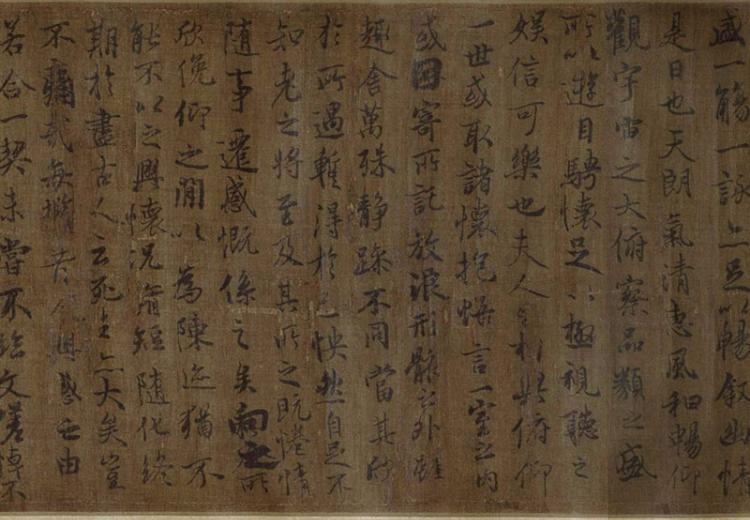Lu Shih—The Couplets of T’ang

"Lan-ting Xu" - Preface to the Poems Composed at the Orchid Pavilion, copy by an artist in the Tang dynasty.
Imagine yourself in the imperial court in ancient China. The year is 750 CE. In the court of the T'ang dynasty, the Emperor Hsuan Tsung glances at one of his ministers and says, "Heron." His minister promptly answers, "Oriole." "Blue heron," says the Emperor. "Yellow oriole," his minister counters, matching color for color, animal for animal. "Blue heron spears a fish," the Emperor declares. "Yellow oriole swallows the worm." The Emperor then finishes, "In triumph, blue heron spears a fish." The minister acknowledges the turn of emotion with, "In humility, yellow oriole swallows the worm." Together the two have created a balanced pair of lines with parallel construction, matching noun for noun, adjective for adjective, and concept for concept. This is the foundation of the sometimes whimsical, often poignant poetic form called the lu shih, or "regulated verse."
The T'ang Dynasty(c. 600-900 CE), the period when the lu shih came to the fore as a poetic form is considered by some to be the peak of classical of Chinese culture. The T'ang court encouraged a cultural boom, building on the elements introduced by the Sui Dynasty before them, and the arts from sculpture to painting flourished. Poetry was among the arts which thrived during the T'ang, several classical forms got their start and were perfected during this period. One of these was the lu shih, which balances parallel couplets, at least two and preferably no more than four, to create a message of irony and insight.
Parallel construction in grammar lessons presents the mechanical concept of pairing like constructions. This lesson in the T'ang poetic form will help reinforce the concept of parallel construction while introducing high school language arts and literature students to Chinese culture through this poetic form and challenging them to find and express subtle messages in the juxtaposition of balanced images.
Guiding Questions
What is a lu shih?
How does the lu shih use parallel couplets to express its message?
What does the lu shih poetic form tell us about ancient Chinese culture?
Learning Objectives
Identify a lu shih
Analyze a lu shih for its parallel construction
Discuss the message expressed by the juxtaposed parallels
Discuss the role of Chinese philosophy's influence in the development of lu shih poetry
Identify lu shih couplets within a longer work from the T'ang dynasty
Successfully complete a collaborative lu shih of at least two couplets by playing the "partnered pairs" game
Compose a simple lu shih of their own of at least two couplets
